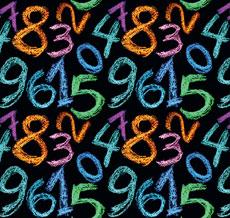 With the advancement of Common Core and the debate over education reform heating up, math disabilities are getting more attention at some local schools than ever before.
With the advancement of Common Core and the debate over education reform heating up, math disabilities are getting more attention at some local schools than ever before.
“We started with a traditional [math education] program, and we scrapped it within three months,” says Jamie Caplan, founder of the Legacy School, a Sykesville-based school focused on helping children with dyslexia. The school focuses on small classrooms and learning at an independent pace.
According to the National Center for Learning Disabilities, dyscalculia, or math learning disability, affect between 5 and 9 percent of children. While many children with dyscalculia are also affected by other kinds of learning disabilities, it is not uncommon for dyscalculia to appear alone. The disability often appears in the form of difficulties remembering number facts, relating quantities to the numbers themselves and recognizing patterns, says the NCLD website.
For parents who suspect their child may have dyscalculia, Caplan says one telltale sign is a discrepancy between what that child understands and what he or she is able to produce.
At The Legacy School, Caplan says teachers focus on cementing the basic building blocks, like subtraction and addition, before moving on to more complicated material. For some students, the addition and subtraction unit can last just a couple of weeks, but for others, it may take months. Caplan says her teachers are instructed to take as long as the children need to be completely confident in each lesson before moving on.
“In math you need that strong foundation,” says Caplan.
Fran Bowman, a former teacher and current educational specialist, agrees.
“Think of it like climbing a ladder,” says Bowman. “You can’t climb the eighteenth rung if you’re missing rungs 15, 16 and 17.”
Bowman has seen a lot of changes in education over her more than four decades of working in the field of education. In the past, she says, some educators have approached learning disabilities by taking the same lessons and strategies they use for other children but moving slower. While this may have seemed like a reasonable tactic, she says, it didn’t address the heart of the problem: that each student learns differently. Strategies that work for one student may not resonate with the student in the neighboring desk.
At the Jemicy School in Owings Mills, Beth Franks, head of math at the lower school, says the school deals with math disabilities by placing students in classrooms organized not by level, but by learner-type. For example, she has some second- graders who sit in math class with third- or fourth-graders. It works, she says, because the classrooms are small, allowing a lot of one-to-one time, and because the students are all being taught in a way that makes sense to them.
Another essential ingredient to teaching students with math disabilities is allowing the children to do the math physically.
“You have to get creative and you have to stick with what works,” says Franks.
Each math classroom at Jemicy has manipulatives for students to use. When they’re learning about geometry, they use Popsicle sticks to create the shapes being discussed. When they’re adding, multiplying, diving or subtracting, the children have access to wooden blocks to place in groups and move around.
Franks says the school often uses the following metaphor, discovered by a fellow Jemicy staff member and originating from the teachings of spiritual leader Paul Solomon, to explain the learning process: “People can describe a strawberry to you, what it looks like, what it feels like, its color and shape, but until you have tasted the strawberry you can’t really know what the strawberry tastes like.”
In other words: Each student has to experience what the equations they are solving mean. Instructors at Jemicy start with the concrete and connect it to the abstract ideas math is centered on.
In the end, says Frank, the biggest difference of all comes when a student realizes he or she has the ability to understand subjects like math or reading and excel.
“Many kids come in and really, really lack confidence,” she says. “When they learn to read, it’s almost like, ‘Hey, I am smart,’ and it sort of transfers over.”